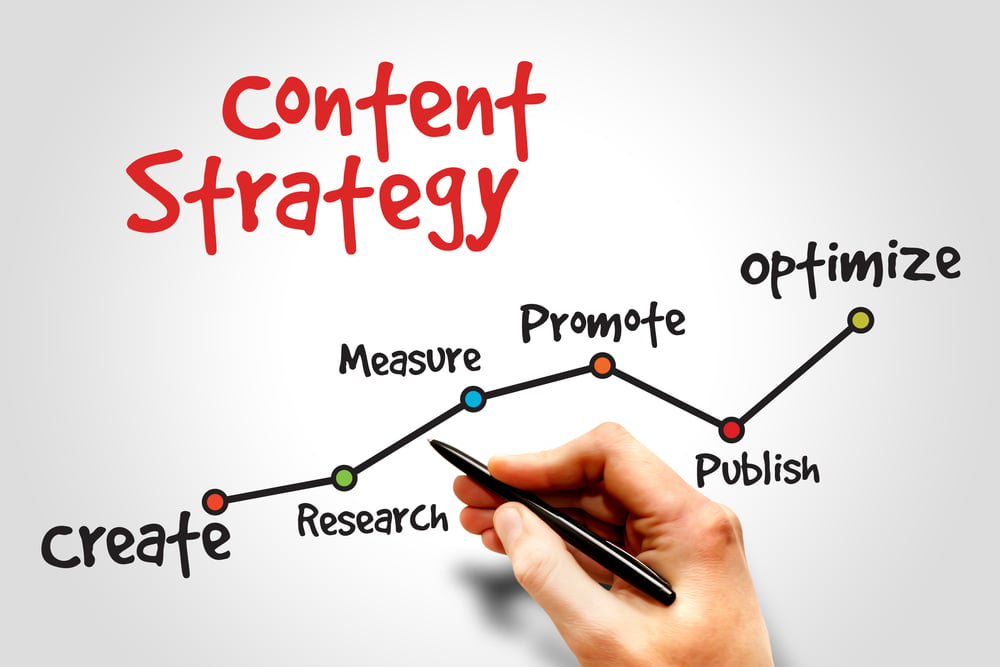Table of Contents
Digital content: what is it and how does it help companies?
In this article, I’ve identified five key points for familiarising yourself with content marketing and understanding its reach. Before we begin, I want to answer two questions that I know are already forming in the minds of readers:
1. What is digital content? And how does it help firms?
An increasing number of SMEs, including highly technical and niche businesses, are building and consolidating their web presence by using digital tools to reach existing and potential customers: not only through websites but also blogs, social media and email newsletters. Creating high-value content to be published via these tools is called content marketing. So, what exactly do we mean by content marketing? It’s a very useful method for companies to attract customers to their business by creating text and other material that is relevant to their target audience.
2. I run an SME that is B2B oriented, in other words one that offers services aimed at other business rather than end consumers. Is it worth investing time and money in content creation?
As far as I’m concerned, the answer can only be yes. What’s more, it’s exactly in this type of case – when promoting niche, technical, complex and perhaps slightly boring products and services proves very challenging if done through traditional advertising – that content marketing can be highly effective. As Francesco Gavatorta and Alberto Maestri wrote in “Digital content marketing”:
“The products sold by B2B firms are usually less appealing: motors, gates and swimming pools are less likely to excite customers than soft drinks, clothes and food. Once again, creating a bespoke, effective digital content strategy around the products on offer is an excellent way of showing off their sexier side“.

Now we’ve cleared this up, we can move on.
1. Content vs. advertising: two different yet complementary tools
First of all, we should consider the difference between content marketing and advertising. Creating digital content is a great way of reaching existing and potential customers using language and methods that are somewhat different from traditional advertising.
But it would be wrong to think that one approach is better than the other. Or that digital media have completely replaced paper. Rather, it’s better to think in these terms: one doesn’t exclude the other and complementarity can be a great strategy.
It’s important to pay careful attention to language, media, channels and objectives. It’s not true that advertising is dead, but for an SME that doesn’t have an enormous budget to spend on a campaign, it’s vital to clearly define which tools would be most effective in achieving growth. While it’s true – very generally speaking – that an outdoor advertising campaign (advertisements on posters and billboards) can be very expensive, and its return on investment difficult to measure, it’s also true that printing flyers, leaflets and postcards can be particularly effective, especially if related to an event or special occasion.
The main difference between producing digital content and advertising lies in the approach. When we create material like ad pages, postcards, flyers, invitation cards and leaflets, we’re trying to draw the public’s attention directly to a company and its products and services. This is outbound marketing, in other words, a strategy that introduces products and services to customers who aren’t looking for them at that moment in time. Examples include traditional TV adverts that interrupt programmes. Or flyers left on car windscreens.
But when it comes to creating digital content, we have to be shrewd and work in more devious ways. We need to talk about themes that relate to our business, but are also useful and interesting to an audience who is looking for information about those very topics on the Internet. We must adopt an editorial approach: it’s only with consistent, coherent and quality content that we will be found by our target audience and become a trusted information source in our sector, thus reaching existing and potential customers. In other words, we’re in the realm of inbound marketing: this means our goal is to create the best possible content for matching searches that our potential customers are genuinely making online. Which content will they choose? Obviously, content that is ranked highest by search engines, and is packed with information and news most relevant to their needs.

2. The best strategy? We learn from other people
If there’s one idea that advertising has brought to the world of communication and that continues to be more relevant, it’s that you should put yourself in other people’s shoes. Put yourself in the shoes of your target audience, empathize with their emotions and identify with their needs and desires. With this approach, we can identify the desires, needs and emotions that actually go through heads of the target audience and which become the foundations for building relationships between us and our customers based on reciprocity and trust. This lesson is also vital when devising a content marketing strategy. Let’s put it in a better way:
Don’t start with yourself, but with your target audience, and try to fully understand their needs: I don’t think there’s a better piece of advice for creating quality content.
Naturally, first we need to have clear objectives – for example, generating leads (potential customers), increasing awareness of the firm, boosting sales or increasing customer loyalty. If we know how to answer the question “Which of our target audience’s problems can we solve and how can we help them satisfy their desires?”, then we can start creating quality content.
3. It’s about more than textual content
When it comes to content marketing, a common mistake is to think only in terms of text. Text is certainly content that we can produce easily, quickly and affordably. That’s why it’s generally the basis of any strategy.
But let’s not forget that images, and video in particular, can be especially effective in reaching our audiences.
When, for example, we share content on a social network like Facebook, the algorithm favours videos, and works more effectively in making them reach their audience. A good editorial plan will therefore mix purely textual content with other, more visual material and, if possible, include dedicated video content. We can also look at things like this: textual content that has already been created and shared can also become, at a later point in your editorial plan, an infographic, podcast or tutorial for sharing on YouTube or – why not? – a webinar in which a company expert helps potential customers to gain a better understanding of a given subject.
4. Where do I put this content? Distribution matters
It might not be obvious but content distribution methods are as important as the quality of the content itself. Simply having good content is not enough to succeed.
We have to build a “content hub”, in other words, an effective system for sharing content and reaching our audience.
A blog can be the perfect base from which to reach your audience through social media, where you can use a reposting and retweeting strategy (sharing content on suitable pages and profiles). An email marketing campaign can also be an effective strategy. So-called engagement, which means getting readers to perform specific actions like clicking on a link or commenting on an article, can obviously be increased by allowing shares or comments on social media. Lastly, appropriate calls to action (buttons inserted into content that invite the reader to perform actions) can be crucial in getting your audience to view and buy your products.

5. Measure, target and redefine
I’m not obsessed with measuring data. But it goes without saying that at the end of a given period, it’s healthy to look at the results of our content strategy in numerical terms.
The goal is to clearly determine the ROI (return on investment) to see if our work is bearing fruit.
Each channel through which we distribute our content (website, blog, social media, newsletters) has one or more systems for collecting data that tell us whether our content is working. We can find out if and how many times it’s been read, which topics most interest our readers, how many times our content has been shared, who has viewed it and how many times people who have read it have then gone on to our website to buy something or get a quote.
The best-known web platform for helping us collect and view this data is Google Analytics. With its metrics, Google Analytics is an invaluable tool for helping us understand how to constantly improve our content marketing strategy. The best approach is not to check this data compulsively and anxiously, but rather to use it constructively. For example, you can analyse it to try to find new ways of working with a keyword, or to find a topic that seems to interest people particularly .
Quick Recap
Before I go, a quick recap. What have said in this article?
- Content marketing is a strategy that complements traditional advertising
- Digital content reaches people by addressing their real needs
- To create good content, you need to identify the customer and think about their actual needs
- Content is not just text, but images, videos, podcasts and much more
- To get the most out of good content, you need to find the right channel through which to distribute it (blogs, social media, newsletters etc.)
- We can measure the results generated by online content to constantly improve it and hone our strategy

